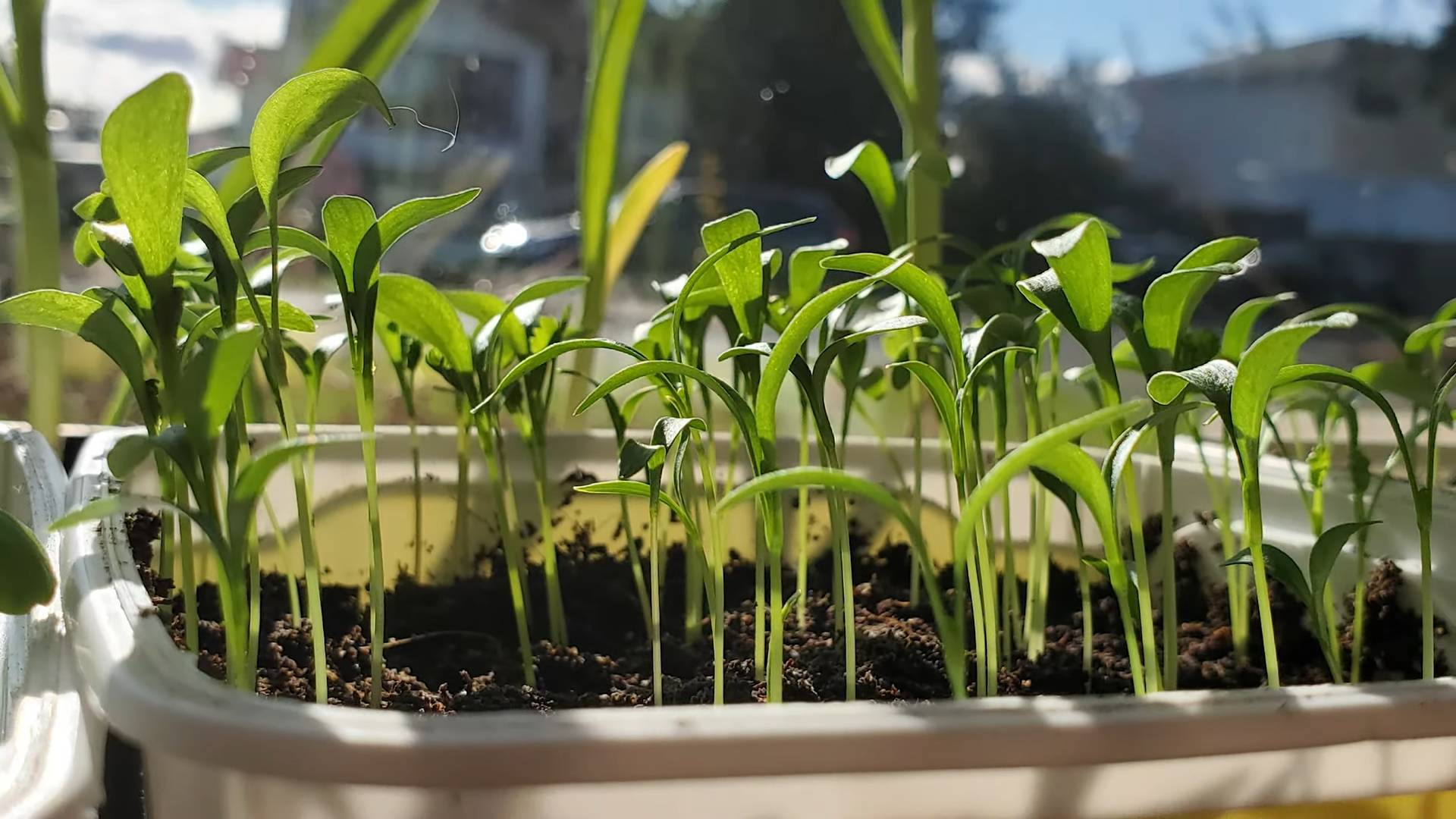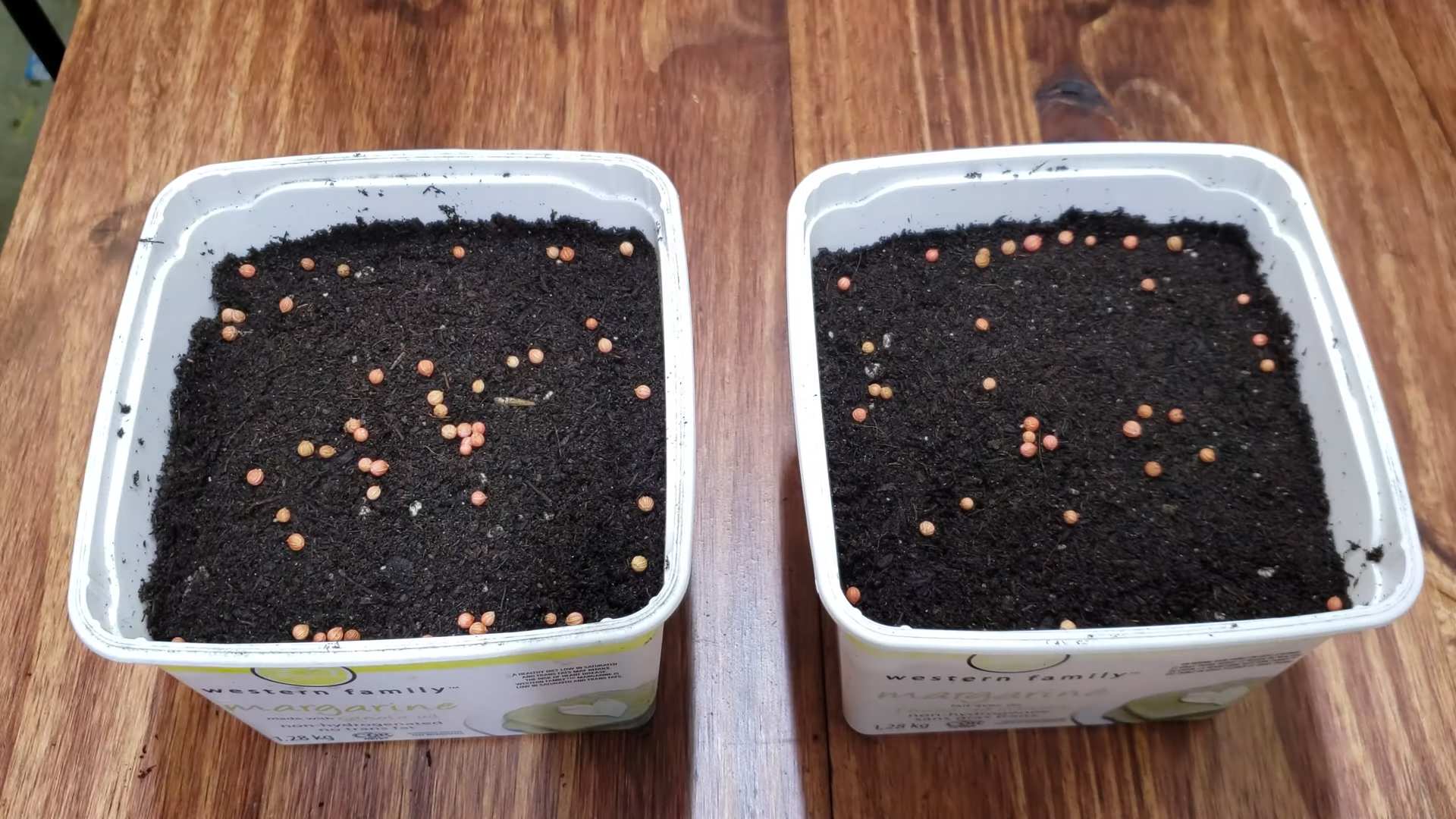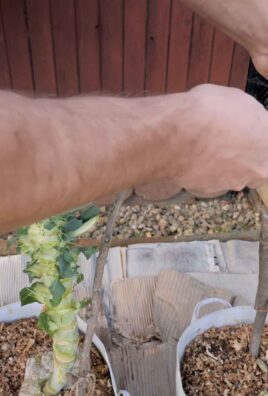Growing Cilantro Indoors can seem daunting, but trust me, it’s easier than you think! Imagine fresh, vibrant cilantro always at your fingertips, ready to elevate your tacos, soups, and salads. No more sad, wilted bunches from the grocery store! For centuries, cilantro has been a culinary staple, tracing its roots back to ancient Egypt, where it was even found in tombs. Its bright, citrusy flavor has graced tables across cultures, from Mexican salsas to Southeast Asian curries.
But let’s face it, buying cilantro can be a gamble. It often goes bad quickly, leaving you with a slimy mess and a wasted trip to the store. That’s where this DIY guide comes in! I’m going to share my tried-and-true secrets for successfully growing cilantro indoors, ensuring a constant supply of this flavorful herb. Whether you have a sprawling garden or just a sunny windowsill, I’ll show you how to cultivate your own thriving cilantro patch. Get ready to ditch the store-bought cilantro and embrace the joy of homegrown freshness!

Growing Cilantro Indoors: A Step-by-Step Guide for Fresh Herbs Year-Round
Hey there, fellow herb enthusiasts! Are you tired of buying cilantro at the grocery store only to have it wilt away in your fridge within days? I know I was! That’s why I decided to take matters into my own hands and learn how to grow cilantro indoors. And guess what? It’s totally doable, even if you don’t have a green thumb! I’m going to walk you through everything you need to know to have a thriving cilantro patch right in your kitchen.
What You’ll Need
Before we dive into the nitty-gritty, let’s gather our supplies. Here’s a checklist of everything you’ll need to get started:
* Cilantro Seeds: You can find these at most garden centers or online. Make sure you’re getting seeds specifically for cilantro (Coriandrum sativum).
* Potting Mix: Use a well-draining potting mix. Avoid using garden soil, as it can compact too much in containers.
* Pots: Choose pots that are at least 6 inches deep and wide. Cilantro has a taproot, so it needs some space to grow. I prefer using terracotta pots because they allow for better drainage.
* Grow Lights (Optional but Recommended): Cilantro needs a lot of light, so if you don’t have a sunny windowsill, grow lights are a must.
* Watering Can or Spray Bottle: For gentle watering.
* Small Shovel or Trowel: For planting the seeds.
* Seed Starting Tray (Optional): If you want to start your seeds indoors before transplanting.
* Fertilizer (Optional): A balanced liquid fertilizer can help boost growth.
Step-by-Step Planting Guide
Okay, now that we have our supplies, let’s get planting! I’m going to break this down into easy-to-follow steps.
1. Prepare Your Pots: Fill your pots with potting mix, leaving about an inch of space at the top. Gently pat down the soil to remove any air pockets.
2. Sow the Seeds: Cilantro seeds have a hard outer shell, so I like to scarify them slightly to improve germination. You can do this by gently rubbing the seeds between two pieces of sandpaper or by soaking them in water for 24 hours before planting. Sow the seeds about 1/4 inch deep and about 1-2 inches apart. You can plant multiple seeds in each pot, but be sure to thin them out later if they all sprout.
3. Water Gently: Water the soil gently until it’s moist but not soggy. I prefer using a spray bottle to avoid disturbing the seeds.
4. Provide Light: Place your pots in a sunny windowsill that receives at least 6 hours of direct sunlight per day. If you don’t have enough natural light, use grow lights. Position the lights a few inches above the seedlings and keep them on for 12-14 hours per day.
5. Maintain Moisture: Keep the soil consistently moist but not waterlogged. Check the soil moisture daily and water when the top inch feels dry to the touch.
6. Thin Seedlings (If Necessary): Once the seedlings have a few sets of true leaves, thin them out so that they are about 2-3 inches apart. This will give them enough space to grow and prevent overcrowding.
Caring for Your Cilantro Plants
Now that your cilantro is growing, it’s important to provide it with the right care to keep it healthy and productive.
1. Watering: As I mentioned before, cilantro needs consistent moisture. Water deeply whenever the top inch of soil feels dry. Avoid overwatering, as this can lead to root rot.
2. Light: Cilantro thrives in bright light. If you’re using grow lights, make sure they are positioned close enough to the plants.
3. Temperature: Cilantro prefers cooler temperatures, ideally between 60-75掳F (15-24掳C). Avoid placing your plants near heat sources, such as radiators or vents.
4. Fertilizing (Optional): If you want to give your cilantro a boost, you can fertilize it every 2-3 weeks with a balanced liquid fertilizer. Follow the instructions on the fertilizer label. I usually dilute the fertilizer to half strength to avoid burning the roots.
5. Pinching Back: To encourage bushier growth, pinch back the tips of the stems when the plants are about 4-6 inches tall. This will also delay bolting (going to seed).
Harvesting Your Cilantro
The best part about growing your own cilantro is, of course, harvesting it! You can start harvesting cilantro leaves when the plants are about 6-8 inches tall.
1. Harvesting Technique: Use scissors or pruning shears to cut the stems about an inch above the soil line. This will encourage the plant to produce more leaves.
2. Harvest Regularly: Harvest cilantro regularly to prevent it from bolting. Once cilantro bolts, the leaves become bitter and the plant will focus on producing seeds.
3. Succession Planting: Cilantro is a short-lived herb, so it’s a good idea to succession plant every few weeks to ensure a continuous supply. This means planting new seeds every 2-3 weeks.
Troubleshooting Common Problems
Even with the best care, you might encounter some problems when growing cilantro indoors. Here are some common issues and how to address them:
* Yellowing Leaves: This could be a sign of overwatering, underwatering, or nutrient deficiency. Check the soil moisture and adjust your watering accordingly. If the soil is consistently moist, you might be overwatering. If the soil is dry, you need to water more often. You can also try fertilizing your plants with a balanced liquid fertilizer.
* Leggy Growth: This is usually caused by insufficient light. Make sure your plants are getting enough sunlight or grow light.
* Bolting: Bolting is when the plant starts to produce flowers and seeds. This is often triggered by hot temperatures or stress. To prevent bolting, keep your plants in a cool location and harvest regularly.
* Pests: Cilantro can be susceptible to pests such as aphids and spider mites. Inspect your plants regularly for signs of infestation. If you find pests, you can try spraying them with insecticidal soap or neem oil.
Extending the Life of Your Cilantro
Cilantro, as I’ve mentioned, is a bit of a diva. It doesn’t last forever. But there are a few things you can do to extend its life and keep it producing those delicious leaves for as long as possible.
1. Cool Temperatures: Keep your cilantro in a cool environment. This is crucial! Heat is the enemy of cilantro.
2. Regular Harvesting: Don’t be shy about harvesting! The more you harvest, the more the plant will produce, and the less likely it is to bolt.
3. Prevent Bolting: Once your cilantro starts to bolt, the leaves will become bitter. You can try to delay bolting by pinching off any flower buds that appear.
4. Succession Planting: This is the most reliable way to ensure a continuous supply of cilantro. Plant new seeds every few weeks so you always have fresh plants ready to harvest.
Saving Cilantro Seeds
If your cilantro does bolt, don’t despair! You can actually save the seeds and use them to grow more cilantro.
1. Allow the Plant to Flower: Let the plant flower and produce seeds.
2. Harvest the Seeds: Once the seed pods are dry and brown, you can harvest them.
3. Dry the Seeds: Spread the seeds out on a tray and let them dry completely.
4. Store the Seeds: Store the dried seeds in an airtight container in a cool, dark place.
Enjoy Your Homegrown Cilantro!
And there you have it! You’re now equipped with the knowledge to grow your own cilantro indoors. It might take a little practice to get it just right, but trust me, the reward of having fresh, flavorful cilantro at your fingertips is well worth the effort. I use mine in everything from tacos and guacamole to soups and salads. Happy growing!

Conclusion
So, there you have it! Growing cilantro indoors isn’t just a possibility; it’s a surprisingly simple and rewarding endeavor. Forget those wilted, expensive bunches from the grocery store. Imagine fresh, vibrant cilantro, bursting with flavor, readily available right in your kitchen. This DIY trick is a must-try for anyone who loves to cook with fresh herbs, especially if you live in a climate where outdoor cilantro cultivation is challenging or impossible for a significant portion of the year.
The beauty of growing cilantro indoors lies in its control. You dictate the environment, ensuring optimal conditions for growth and minimizing the risk of bolting (premature flowering). You’re in charge of the light, the water, and the soil, creating a little cilantro paradise within your home.
But the benefits extend beyond convenience and control. Think about the satisfaction of nurturing a plant from seed to harvest. Think about the reduced waste from buying pre-packaged herbs that often go bad before you can use them all. Think about the sheer joy of snipping off a handful of fresh cilantro to garnish your tacos, salads, or soups.
Don’t be afraid to experiment! Try different varieties of cilantro to find your favorite flavor profile. Some people prefer the slow-bolting varieties specifically bred for warmer climates, even when growing indoors. Consider using different types of containers, from terracotta pots to self-watering planters, to see what works best for your space and watering habits. You can even try companion planting, placing your cilantro near other herbs like basil or parsley to potentially deter pests and enhance growth.
And speaking of pests, keep a close eye on your cilantro plants. While indoor growing minimizes the risk, aphids or spider mites can still occasionally appear. A simple solution of soapy water sprayed on the leaves can usually take care of these unwanted visitors.
Ultimately, growing cilantro indoors is about more than just having fresh herbs on hand. It’s about connecting with nature, learning about plant life, and enjoying the fruits (or rather, the leaves) of your labor. It’s a small but significant step towards a more sustainable and flavorful lifestyle.
We wholeheartedly encourage you to give this DIY trick a try. It’s easier than you think, and the rewards are well worth the effort. Once you’ve experienced the joy of harvesting your own fresh cilantro, you’ll never go back to store-bought again.
And most importantly, we want to hear about your experience! Share your tips, tricks, and triumphs in the comments below. Let us know what worked for you, what challenges you faced, and what delicious dishes you created with your homegrown cilantro. Your insights will help other aspiring indoor gardeners succeed and inspire us all to keep growing! Let’s cultivate a community of cilantro enthusiasts!
Frequently Asked Questions (FAQ)
What kind of soil is best for growing cilantro indoors?
The best soil for growing cilantro indoors is a well-draining potting mix. Avoid using garden soil, as it can be too heavy and compact, leading to poor drainage and root rot. Look for a potting mix that contains ingredients like peat moss, perlite, and vermiculite. These components help to retain moisture while also providing adequate aeration for the roots. You can also amend your potting mix with a small amount of compost to provide additional nutrients. A slightly acidic to neutral pH (around 6.0 to 7.0) is ideal for cilantro.
How much sunlight does indoor cilantro need?
Cilantro needs at least 6 hours of direct sunlight per day to thrive. If you don’t have a sunny windowsill, you can supplement with artificial light. A fluorescent grow light or an LED grow light will work well. Place the light a few inches above the plants and keep it on for 12-14 hours per day. Rotate the plants regularly to ensure even light exposure on all sides. Insufficient light is a common reason for leggy growth and poor flavor in indoor cilantro.
How often should I water my indoor cilantro?
Water your cilantro when the top inch of soil feels dry to the touch. Avoid overwatering, as this can lead to root rot. Water thoroughly until water drains out of the bottom of the pot. Be sure to empty the saucer underneath the pot to prevent the plant from sitting in water. During warmer months, you may need to water more frequently. Check the soil moisture regularly and adjust your watering schedule accordingly.
Why is my cilantro bolting (going to seed)?
Bolting is when cilantro prematurely flowers and goes to seed. This is often caused by stress, such as high temperatures, insufficient water, or lack of nutrients. To prevent bolting, keep your cilantro plants in a cool location (ideally below 75掳F), water them regularly, and fertilize them with a balanced fertilizer every few weeks. You can also try growing slow-bolting varieties of cilantro, which are less prone to flowering. If your cilantro does start to bolt, you can still harvest the leaves, but they may have a slightly bitter taste. You can also collect the seeds (coriander) for use in cooking.
What kind of fertilizer should I use for indoor cilantro?
Use a balanced liquid fertilizer diluted to half strength every 2-3 weeks. Look for a fertilizer with an NPK ratio (nitrogen, phosphorus, potassium) of around 10-10-10 or 20-20-20. Avoid over-fertilizing, as this can burn the roots. You can also use organic fertilizers, such as fish emulsion or compost tea. These are gentler on the plants and provide a slow-release source of nutrients.
How do I harvest cilantro leaves?
Harvest cilantro leaves by snipping them off with scissors or pinching them off with your fingers. Start harvesting when the plants are about 6 inches tall. Harvest the outer leaves first, leaving the inner leaves to continue growing. Regular harvesting will encourage the plant to produce more leaves. Avoid harvesting more than one-third of the plant at a time.
Can I grow cilantro from seed indoors?
Yes, you can easily grow cilantro from seed indoors. Soak the seeds in water for 24 hours before planting to improve germination. Sow the seeds about 1/4 inch deep in well-draining potting mix. Keep the soil moist but not soggy. Germination typically takes 7-10 days. Once the seedlings emerge, thin them out so that they are spaced about 2-3 inches apart.
How long will my indoor cilantro plant last?
Cilantro is an annual plant, meaning it completes its life cycle in one growing season. However, with proper care, you can extend the life of your indoor cilantro plant for several months. To prolong its life, prevent bolting, harvest regularly, and provide adequate light, water, and nutrients. You can also try succession planting, sowing new seeds every few weeks to ensure a continuous supply of fresh cilantro.
What pests and diseases affect indoor cilantro?
Indoor cilantro is generally less susceptible to pests and diseases than outdoor cilantro. However, aphids and spider mites can sometimes be a problem. To control these pests, spray the plants with a solution of soapy water or neem oil. You can also try introducing beneficial insects, such as ladybugs, to your indoor garden. Root rot can also be a problem if the soil is too wet. To prevent root rot, use well-draining potting mix and avoid overwatering.
Can I transplant my indoor cilantro plant outdoors?
Yes, you can transplant your indoor cilantro plant outdoors, but it’s important to acclimate it to the outdoor conditions gradually. Start by placing the plant outdoors in a sheltered location for a few hours each day, gradually increasing the amount of time it spends outdoors. After about a week, you can transplant it into the garden. Choose a location with well-draining soil and partial shade. Be sure to water the plant regularly after transplanting. However, keep in mind that cilantro tends to bolt quickly in hot weather, so it may not thrive outdoors during the summer months.




Leave a Comment